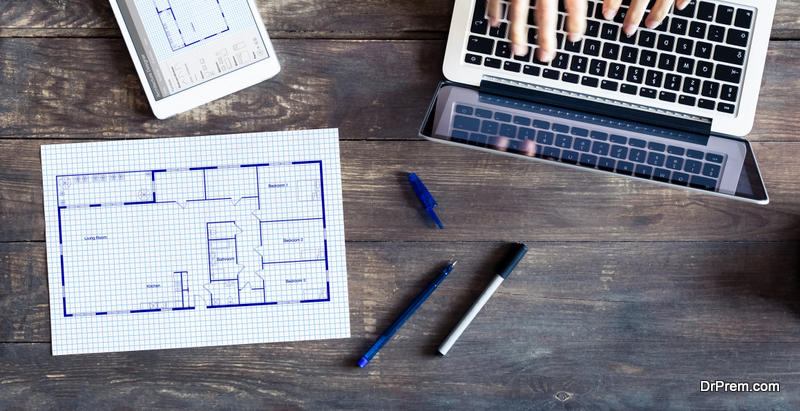A construction project is a significant undertaking with many stages. It includes the stages of conceptualization, design, pre-construction, procurement, and construction. The design stage is the most crucial of them all. You sit with an architect during the design phase to create the plan for your dream home. Creating a floor plan is one of the fundamental tasks of the design phase.
Floor plans are drawings that depict the layout of your home’s upper floors from an aerial perspective. The size of your home’s interior will be determined by the floor plan you choose. This is crucial since your floor plan will determine the floor area of your entire home. Are you concerned about making mistakes when creating your floor plan as a homeowner? Well, don’t worry because here are some recommendations you can use during this process.
1. Consider Functionality

Most homeowners tend to get carried away during the design process and focus more on aesthetics, preceding functionality as the most important aspect. Remember that you should strike a balance between aesthetics and function for practicality. By doing this, you can guarantee that each room fulfills its intended function.
Furthermore, it’d help to group rooms that serve similar functions. For instance, your living room, dining area, and kitchen should be on the same floor and within proximity. The proximity allows room for communication. You can talk to your guests or family in the living room as you prepare food for them in the kitchen.
Regarding your washrooms, ensure they’re in the corners of your home, preferably connected to your external wall rather than the internal wall. Place all the bathrooms on one side of the walls if the house is a multi-story structure to enable developing the plumbing systems to be more accessible. As you create your floor plan, these are some factors you should consider to ensure practicality. Notable, a floor plan software should help you visualize what the floor plan will look like. It’ll help you make adjustments as you deem necessary until you find the perfect plan.
2. Identify Your Needs
The design of your floor plan must take into account your needs. They’ll influence all your other steps during this process. In this situation, you should determine the quantity and purpose of the rooms you require, your preferred configuration, and unique family needs, such as caring for an aging family member. So, you’d have to add a bedroom on the ground floor if your home is a two-story house to accommodate them.
Please write down your needs and separate them into two categories: those that must be met and those that can be compromised. The list will assist you in making the necessary plans upfront to prevent scenarios when you realize you need a specific place after you’ve already started the work. Such modifications may cause your project to regress several steps.
3. Consider The Use Of A Room

Different rooms in your space serve other purposes. Your use of a room should help you decide its size. Suppose you host many friends and family regularly. You must design a living room with adequate space to accommodate everyone in the whole house. If you barely cook, you don’t necessarily need a large-sized kitchen. It would be best if you continued with the same thought process as considering the size of the other spaces in your home.
It’s a good idea to leave additional space on the square footage as you arrange the sizes. You don’t know if the room will need to be changed in the future. You want to be able to do this without having to renovate your property completely. Make sure the room size you choose matches your needs for the same space while considering traffic.
4. Look At Costs
Cost is a crucial aspect of any construction project. You want to keep your expenditure to the bare minimum to save on costs. Different elements of your floor plan design can affect your price.
One aspect to consider is the square footage of your final plan in terms of the perimeter to floor area ratio. It’s always advisable to keep this ratio as low as possible if you’re aiming for cost-effectiveness. In most cases, the perimeter to floor area ratio becomes offset with the final shape of your floor plan. A 100 square meter floor area with a uniform shape, such as a square or rectangle, will be less expensive than an L-shaped floor plan. Why? Although the areas are similar, the L-shape increases the perimeter of the plan. You’ll spend more on the said external wall than a plain wall.
The shape also affects how you’ll install mechanical and electrical services. Non-uniform shapes like circles make servicing complex. The more complex a task is, the more you’ll pay for the execution.
Therefore, be sure to settle for a floor plan whose design results in a simple shape and outline.
Conclusion
This article’s goal was to provide advice on building a floor plan, and the above discussion has done just that. If you follow the tips mentioned above, you’ll be designing the ideal floor plan based on your needs and preferences. Additionally, working with an architect is a good option if things go wrong. With their knowledge of the subject, they can give you excellent advice.
Article Submitted By Community Writer




